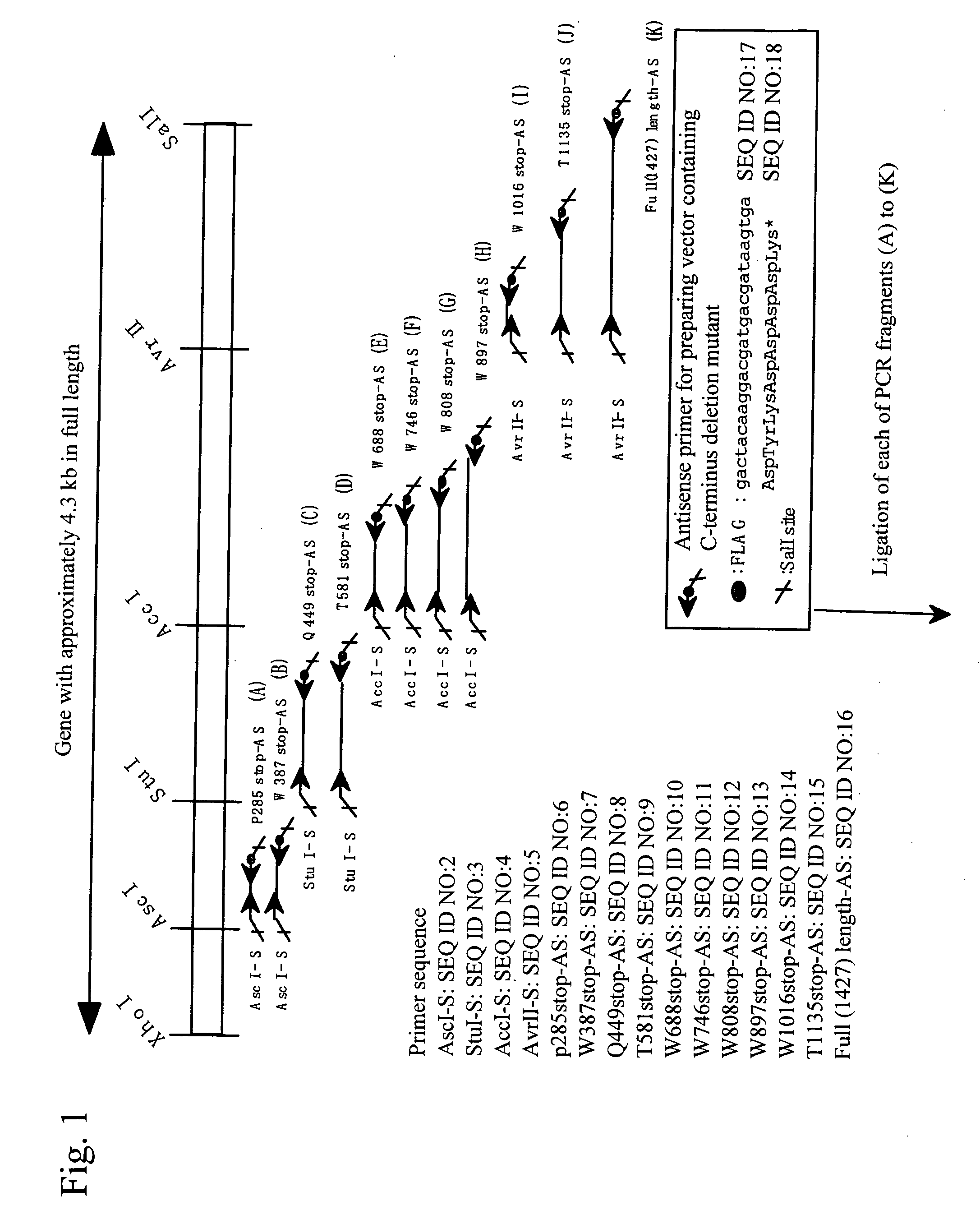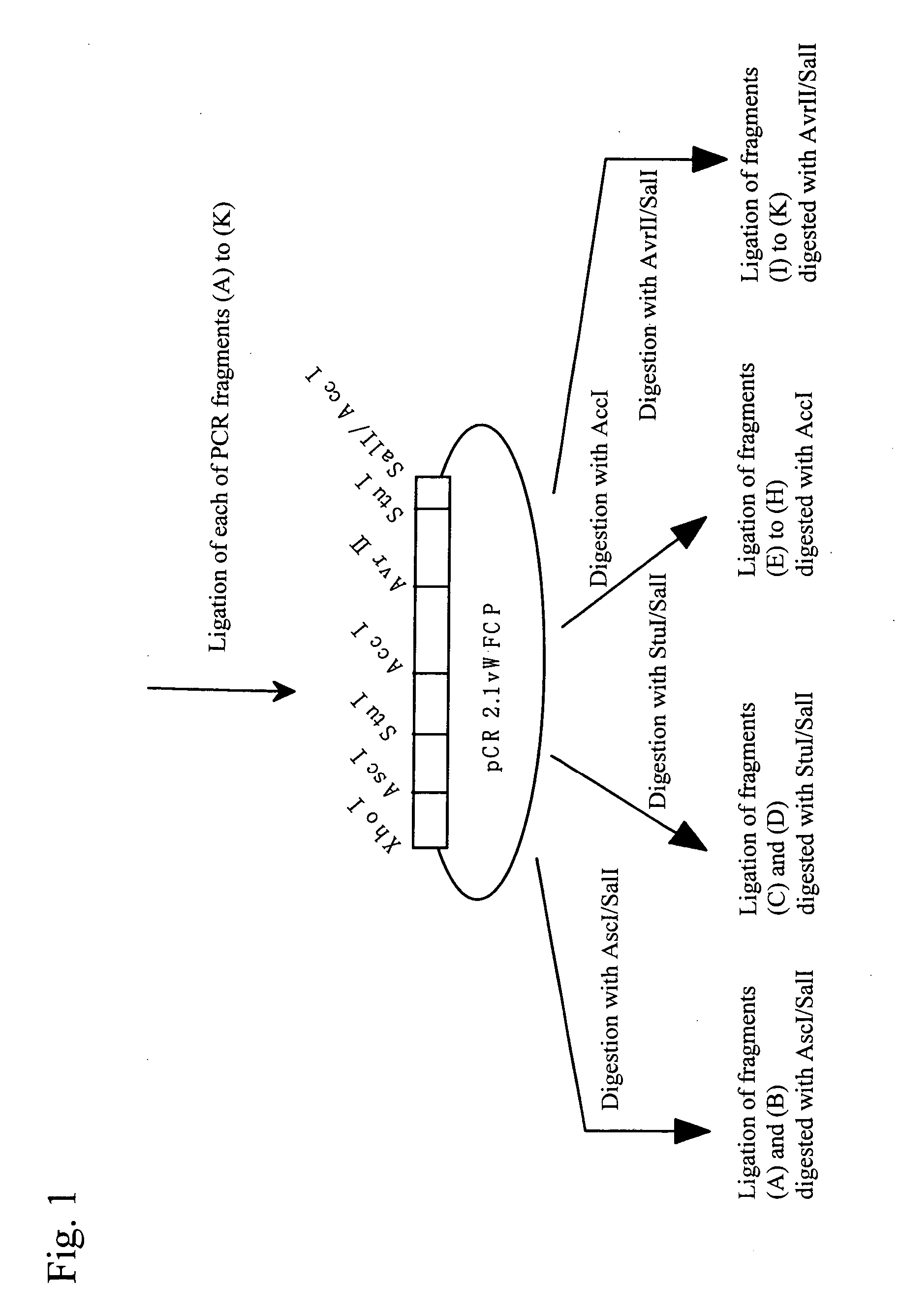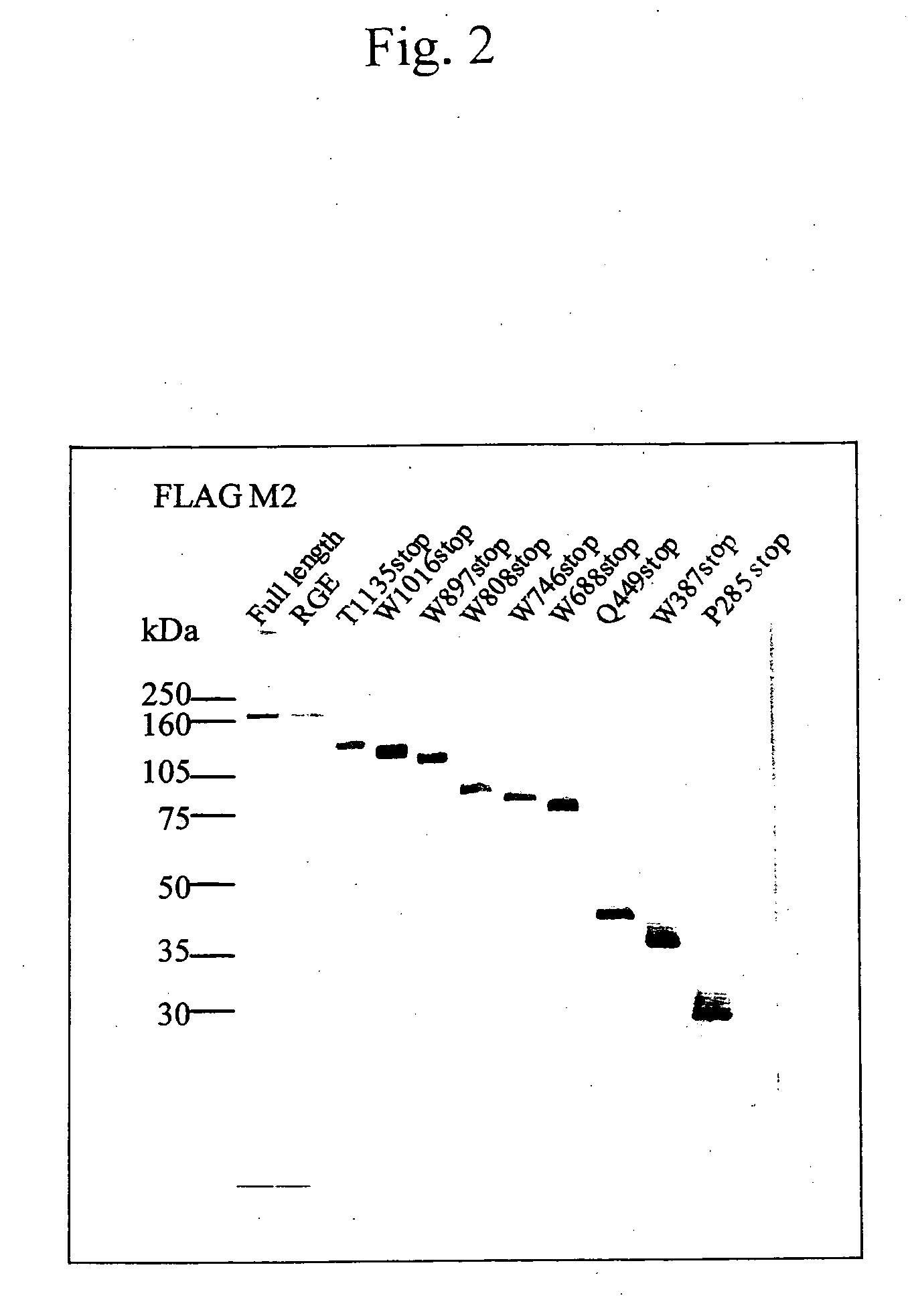Construct comprising recognition domain of antibody against von willebrand factor-specific cleaving enzyme
a technology of von willebrand factor and recognition domain, which is applied in the field of ethical drugs, can solve the problems of inconvenient diagnostic method for patients positive for autoantibody against the protease, and achieve the effect of improving the diagnostic method
- Summary
- Abstract
- Description
- Claims
- Application Information
AI Technical Summary
Benefits of technology
Problems solved by technology
Method used
Image
Examples
preparation example 1
Preparation of C-terminus Deletion Mutant of ADAMTS-13
[0036] Expression vectors for full-length and mutant (sequentially lacking domains from the C terminus) (Fu1427, and T1135X, W1016X, W897X, W808X, W746X, W688X, T581X, Q449X, W387X, and P285X; each numerical value represents the number of amino acid residues from Met encoded by an initiation codon ATG to a stop codon, and X represents a stop codon) genes described in the previous patent application (JP Patent Application No. 2002-279924) were utilized to perform transfection using Hela cells in the procedures below. Each mutant location in a full-length sequence is shown in FIG. 1.
[0037] At first, 24 hours before transfection, 1-3×105 cells per 35-mm dish were seeded. On the following day, 10 μl of the Polyamine Transfection Reagent TransIT (manufactured by TAKARA) per 2 μg of each of the expression vectors was added to 200 μl of a serum-free medium such as Opti-MEM to prepare a complex with DNA according to the instructions at...
example 1
Analysis of Epitope for Antibody in Acquired TTP Patient using Western Blotting
[0038] IgG fractions (antibody concentration: 2 to 5 mg / ml) were prepared from plasma samples from acquired TTP patients using a protein A column according to a standard method, and diluted 200-fold to perform Western blotting. An IgG-alkaline phosphatase-labeled antibody was used as a secondary antibody in a filter, and the filter was stained with a BCIP / NBT substrate to visualize bands (FIGS. 3 to 5). The region thereby determined which is recognized by the antibody was confirmed to be located on the C-terminus side from the Q449X, because a region up to the W688X shows reactivity and a region at the Q449X shows no reactivity with all of the antibody fractions from the three patients,.
example 2
Analysis of Precise Epitope for Antibody in Acquired TTP Patient using Western Blotting Based on Principle of Competitive Inhibition
[0039] For narrowing down the more precise location of the epitope recognized by the neutralizing antibody of the present invention, supernatants from the W688X mutant and the full-length wild-type ADAMTS-13 were subjected to electrophoresis and transferred to a PVDF membrane. The PVDF membrane was utilized in a competitive inhibition system using primary antibody reaction solutions obtained by previously preincubating the above-described antibodies from the patients with a concentrated supernatant having the considerable overexpression of the Q449X mutant, the W688X mutant, or the full-length wild-type ADAMTS-13. As a result, bands positive for the full-length wild type ADAMTS-13 for all of the samples were confirmed to disappear by the W688X mutant (FIG. 6).
[0040] This has suggested that all of the antibodies from the three patients recognize a regi...
PUM
| Property | Measurement | Unit |
|---|---|---|
| concentration | aaaaa | aaaaa |
| pH | aaaaa | aaaaa |
| pH | aaaaa | aaaaa |
Abstract
Description
Claims
Application Information
 Login to View More
Login to View More - R&D
- Intellectual Property
- Life Sciences
- Materials
- Tech Scout
- Unparalleled Data Quality
- Higher Quality Content
- 60% Fewer Hallucinations
Browse by: Latest US Patents, China's latest patents, Technical Efficacy Thesaurus, Application Domain, Technology Topic, Popular Technical Reports.
© 2025 PatSnap. All rights reserved.Legal|Privacy policy|Modern Slavery Act Transparency Statement|Sitemap|About US| Contact US: help@patsnap.com



